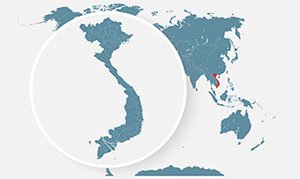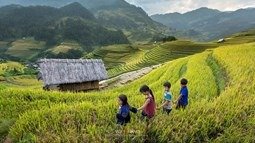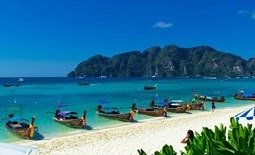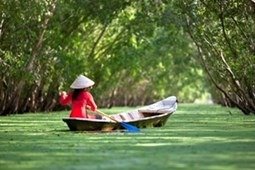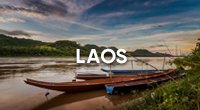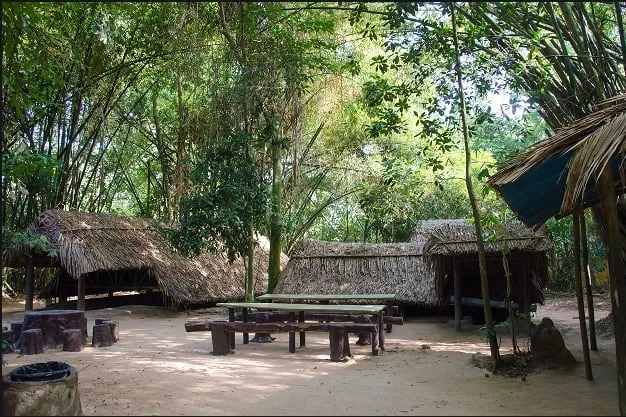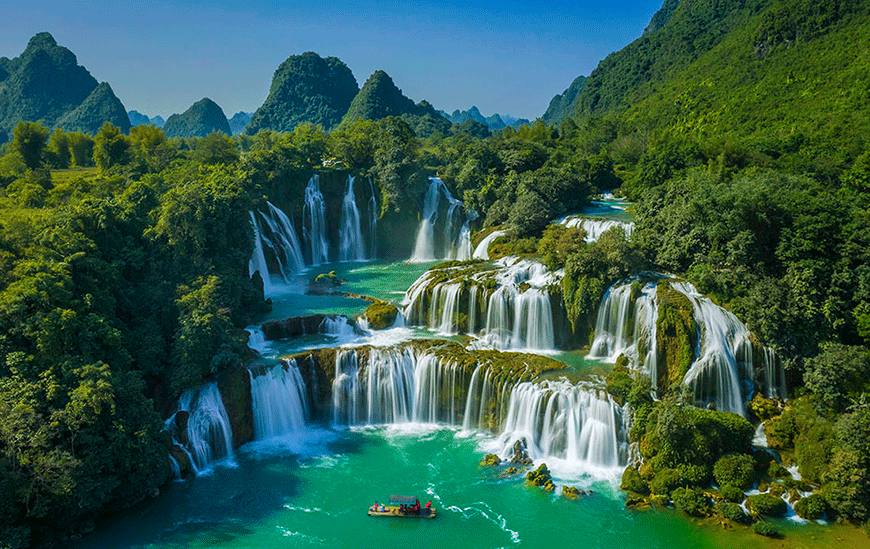Contents
ToggleWhy Visit Mount Fansipan?
Known as the “Roof of Indochina”, Mount Fansipan is the highest peak in Vietnam, Laos, and Cambodia. Standing proudly at 3,147 meters, it offers not only breathtaking views but also a journey through millions of years of geological history and a tapestry of diverse ecosystems.
📍 Location: Just 9 km southwest of Sapa town, straddling the provinces of Lao Cai and Lai Chau.
⛰️ Mountain range: Part of the Hoang Lien Son range, an eastern offshoot of the mighty Himalayas.
🕰️ Geological age: Formed some 250–260 million years ago, during the transition from the Permian to the Triassic period.
Biodiversity and Natural Beauty
Fansipan is a true paradise for nature lovers. The mountain is home to:
- 🌿 Over 1,700 plant species, including rare orchids and medicinal herbs.
- 🐦 Diverse wildlife, from colorful pheasants to shy civets.
- 🐒 Endangered species such as the black gibbon, listed in Vietnam’s Red Book of endangered species.
What makes Fansipan unique is its distinct vegetation zones. Starting from the foothills, trekkers pass through lush tropical jungles, bamboo forests, and mossy pine groves before reaching alpine vegetation near the summit. Each zone reveals a new face of the mountain, creating a trek that feels like walking across several worlds in one journey.
Cultural Significance
Fansipan is not only a natural wonder but also a spiritual destination. At the summit complex, visitors find grand temples, shrines, and statues, including a towering bronze Buddha. These structures, built in harmony with the landscape, add a layer of serenity to the mountain’s rugged majesty.
For both adventure seekers and casual travelers, Fansipan is a must-visit—an experience that combines physical challenge, cultural immersion, and unforgettable scenery.
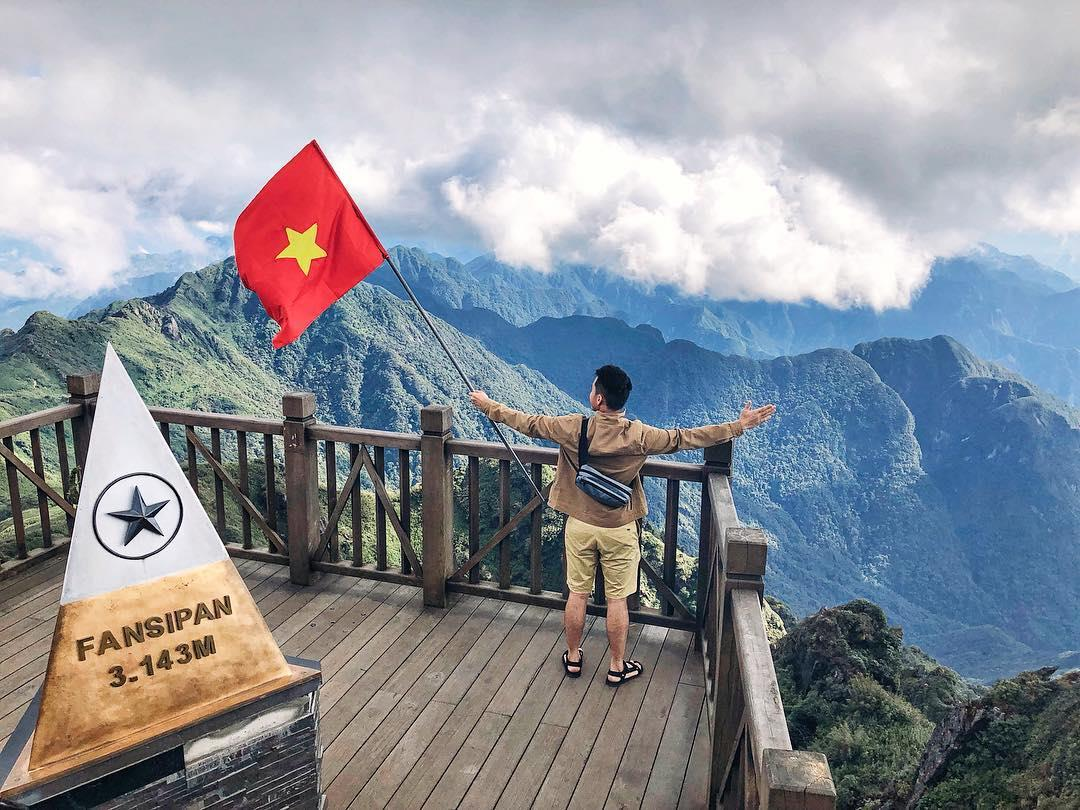
Trekking vs. Cable Car: Which Option Is Right for You?
For centuries, conquering Fansipan meant embarking on a multi-day expedition. Trekkers battled steep trails, crossed streams, and camped overnight in the forest. Today, the arrival of a state-of-the-art cable car system has transformed the way travelers experience Vietnam’s highest peak.
Trekking Fansipan
- ⏱️ Duration: 2–3 days, depending on the route.
- 💪 Best for: Adventurers, seasoned hikers, and those who crave the satisfaction of reaching the top on foot.
- 🌲 Highlights: Walking through untouched forests, camping under the stars, and witnessing the sunrise from the summit after an exhausting but rewarding climb.
- 🧭 Popular routes:
- Tram Ton Pass – the easiest and most popular trail.
- Sin Chai Village – a tougher climb, starting lower in the valley.
- Cat Cat Village – the most challenging, for experienced trekkers.
Taking the Cable Car
- ⏱️ Duration: Just 15 minutes to ascend over 1,400 meters in elevation.
- 🌄 Best for: Families with children, elderly travelers, or anyone short on time.
- 🌤️ Highlights: Panoramic views of the Hoang Lien Son range, floating above valleys, terraced rice fields, and clouds.
- 🚶 Final stretch: After the cable car, visitors still climb a short series of stone steps (or take a funicular train) to reach the summit.
Both options offer something unique. Trekking gives you a sense of achievement and a closer connection to nature, while the cable car provides accessibility and unforgettable aerial views. Some adventurous travelers even choose to trek up and take the cable car down, blending the best of both worlds.
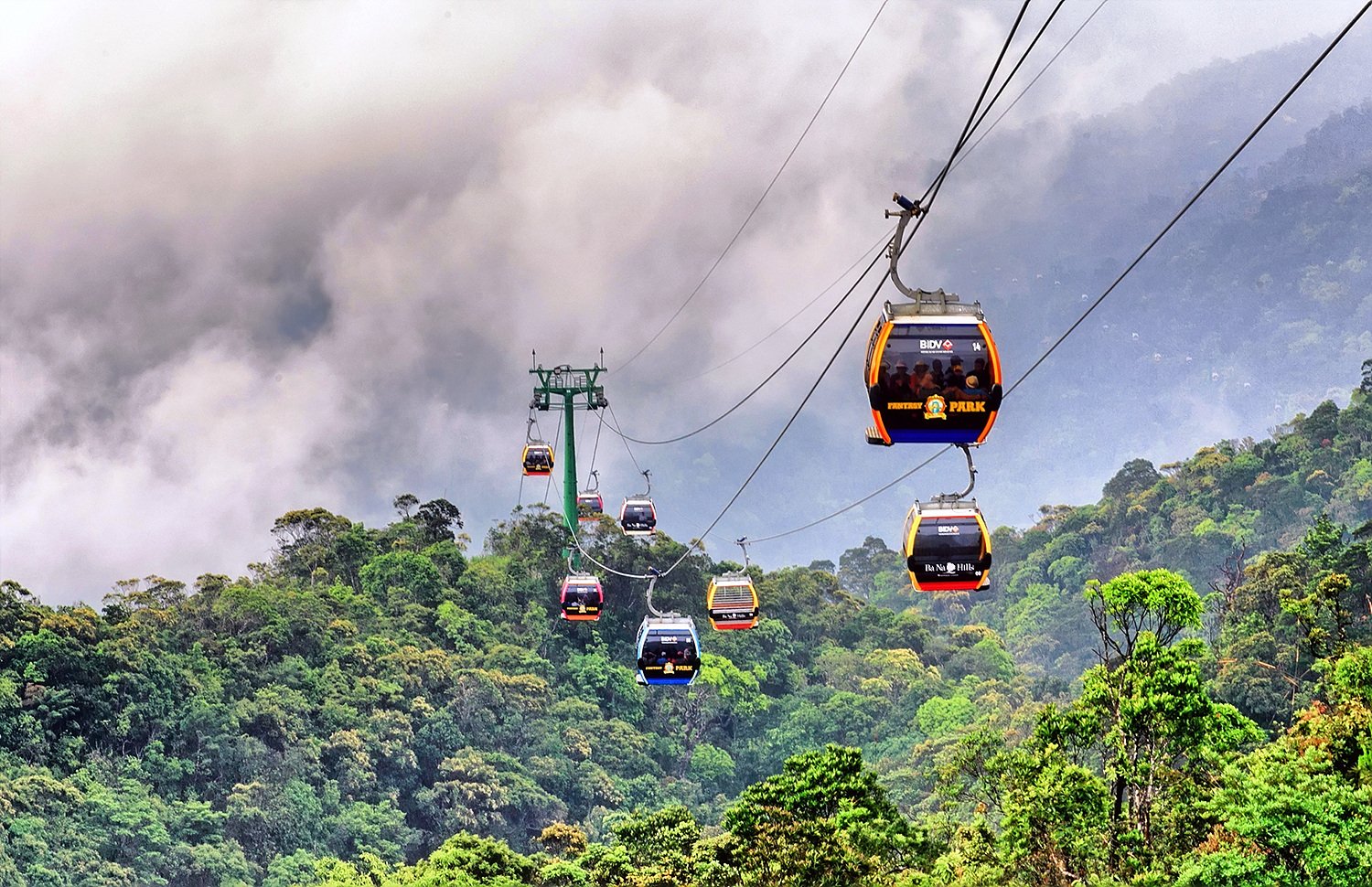
Trekking Mount Fansipan: A Step-by-Step Adventure
The classic trekking route up Mount Fansipan starts at Tram Ton Pass (also called Heaven’s Gate), about 15 km from Sapa town. Stretching over 11.2 km, this journey usually takes 2–3 days depending on pace and fitness. Each stage offers its own unique challenges and breathtaking rewards.
Stage 1: Tram Ton Pass → 2,200 m
The trek begins with relatively gentle slopes and shaded forest trails. You’ll pass by bubbling streams and bamboo groves, with the sound of birdsong accompanying you along the way. The air here is fresh and cool, making it the perfect warm-up before the climb steepens. Many guides pause for lunch at a forest clearing, where trekkers can recharge before the next ascent.
Stage 2: 2,200 m → 2,800 m
This stage is where the trek starts to get more demanding. The trail becomes steeper, with rocky paths, mossy boulders, and occasional scrambling required. Along the way, you’ll encounter waterfalls cascading down cliffs and enjoy sweeping mountain panoramas as the forest begins to thin out.
- Most groups choose to camp overnight at an altitude of 2,800 m.
- Campsites are simple but cozy, with tents, basic facilities, and meals prepared by porters or guides.
- If the sky is clear, you’ll be treated to an incredible view of the star-filled night sky over the Hoang Lien Son range.
Stage 3: 2,800 m → The Summit (3,147 m)
The final push is both the toughest and most rewarding part of the trek. The trail undulates sharply, meaning you’ll climb and descend multiple times before reaching the top. The vegetation changes again, giving way to stunted alpine trees, moss, and wind-swept ridges.
- The last few hundred meters are often steep and slippery, especially in wet weather.
- Reaching the summit, you’ll finally stand beside the triangular Fansipan marker, the official symbol of Vietnam’s highest peak.
- On clear mornings, the panoramic view is nothing short of breathtaking: seas of clouds floating over the valleys, terraced rice fields glistening in the sunlight, and the jagged peaks of the Hoang Lien Son stretching endlessly into the horizon.
For many trekkers, the moment of reaching the summit is more than just a physical achievement—it’s an emotional experience, a blend of exhaustion, exhilaration, and awe.
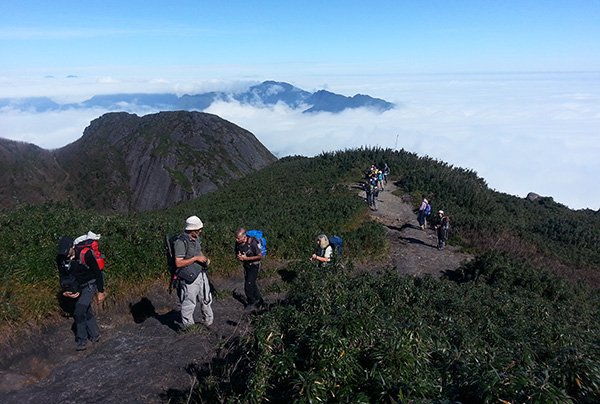
Reaching Fansipan by Cable Car
For those who dream of standing on the “Roof of Indochina” but aren’t ready for a multi-day trek, the Fansipan Cable Car, opened in 2016, offers the perfect solution. This engineering marvel holds two Guinness World Records: the world’s longest three-cable system (6,292 m) and the greatest elevation difference by a cable car (1,410 m).
- Starting Point: The journey begins at Hoang Lien Station, just 3 km from Sapa town. Travelers can reach it by taxi, on foot, or by riding the scenic Muong Hoa funicular train.
- Duration: The cable car takes only 15–20 minutes to whisk visitors from 1,600 m to near the summit at 3,000 m.
- Views Along the Way: From the cabin windows, you’ll witness breathtaking scenes of the Muong Hoa Valley, with its terraced rice fields glistening like mirrors, and the rugged Hoang Lien Son mountain range unfolding beneath your feet.
At the top, a short funicular ride or stair climb brings you to the summit marker, where you can capture the iconic photo at Vietnam’s highest point.
🎟 2025 Cable Car Ticket Prices
- Adults: 800,000 VND (Mon–Fri & Sun) / 850,000 VND (Sat & holidays)
- Children: 550,000 VND
- Pilgrims: 680,000 VND (adults) / 480,000 VND (children)
👉 Other options:
- Muong Hoa Funicular Train: 200,000 VND
- Fansipan Funicular: 150,000 VND (up) / 120,000 VND (down)
- Combo Tickets: From 950,000 VND (cable car + dining experiences)
🕒 Operating Hours (2025)
- Muong Hoa Train: 7:45 – 16:00
- Cable Car: 8:00 – 17:00
- Fansipan Funicular: 8:30 – 16:30 (shorter hours Mon–Thu)
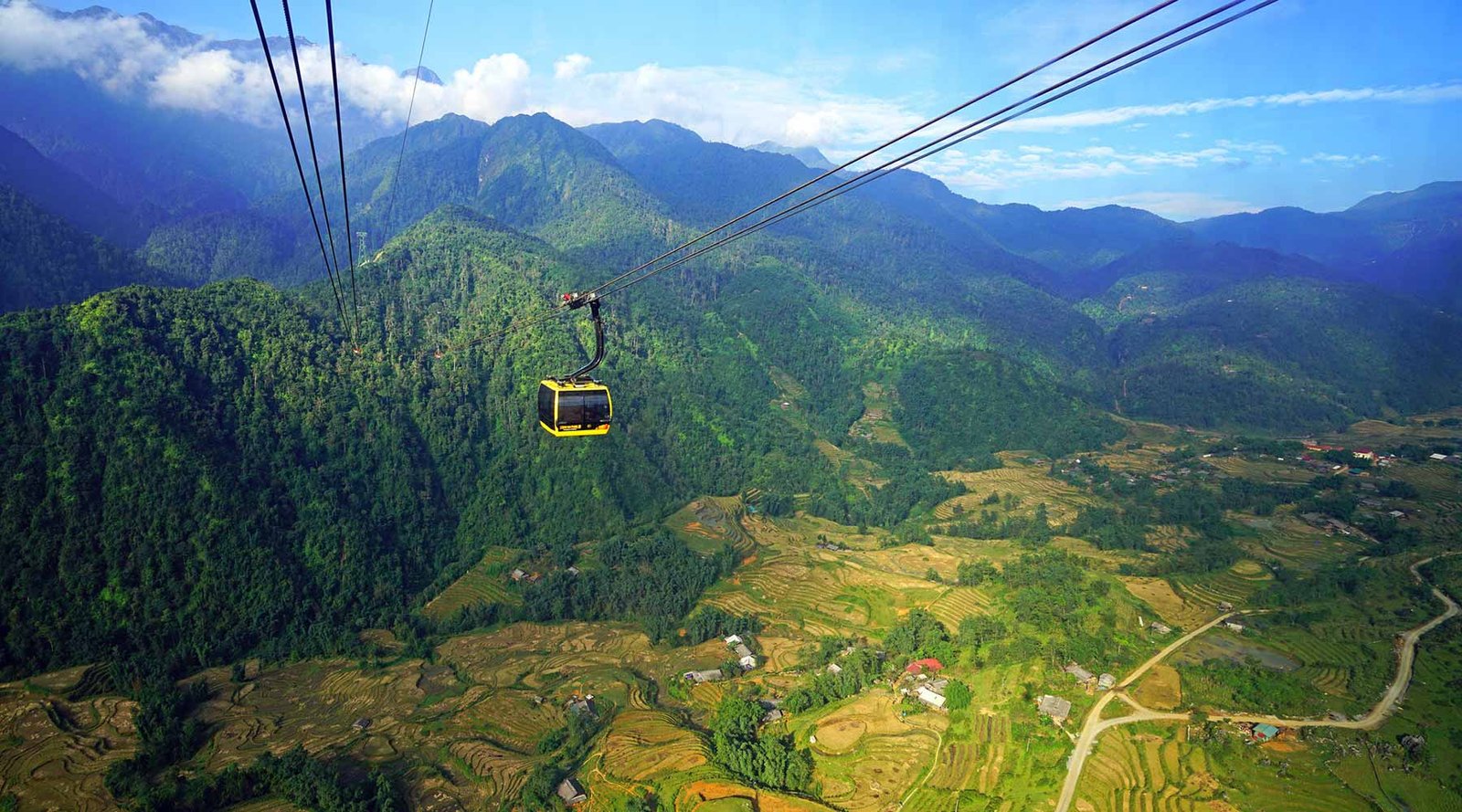
Best Time to Visit Mount Fansipan
Because of its altitude, Fansipan enjoys a cool, temperate climate all year, but conditions vary widely depending on the season:
- 🍂 September – November: The best trekking season. Clear blue skies, refreshing weather, and golden rice terraces in Sapa’s valleys.
- 🌸 March – May: Mild temperatures and colorful blossoms make this a wonderful time for both trekking and sightseeing.
- 🌧 June – August: Warm but rainy. The landscape is lush and green, though trails can be slippery—best for cable car visitors rather than trekkers.
- ❄️ December – January: Cold, with frost and even occasional snow. Magical for photographers but challenging for trekking.
👉 Whether you hike or ride the cable car, early mornings and late afternoons often provide the clearest views from the summit.
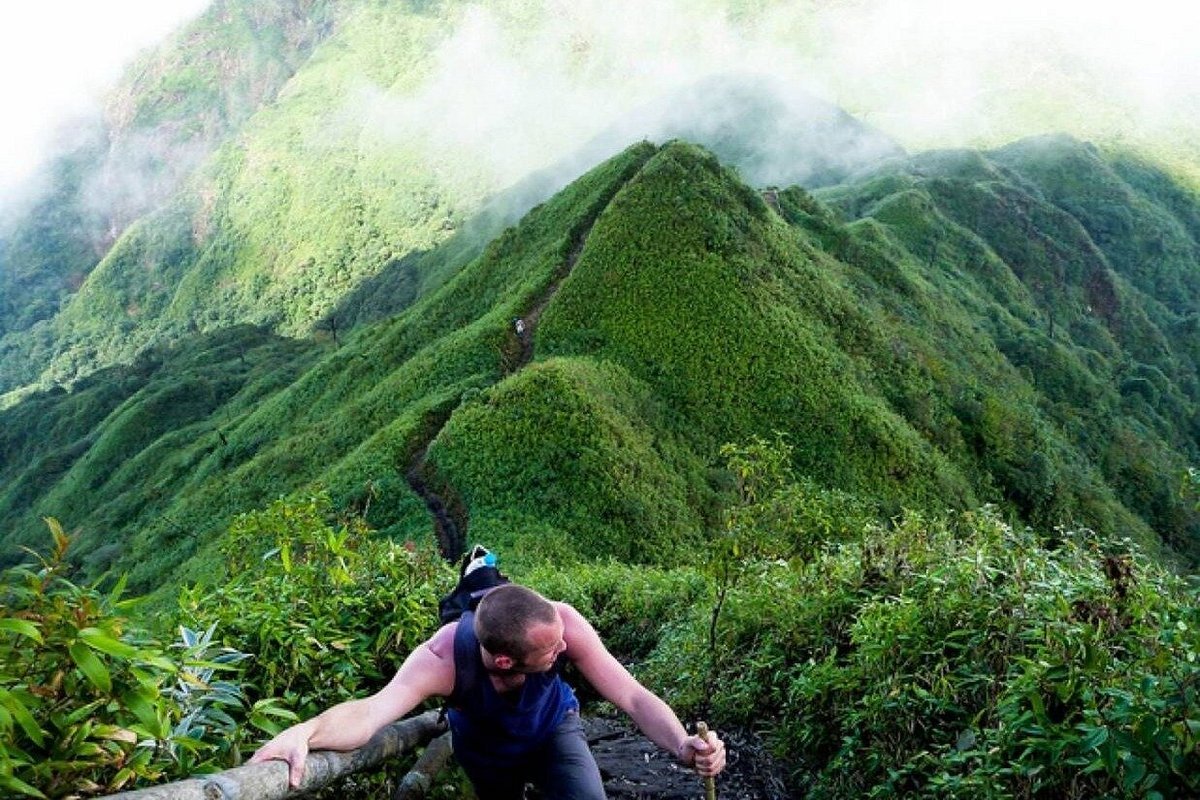
Final Thoughts
Whether you trek for days or ride the cable car in minutes, Mount Fansipan in 2025 offers a journey you’ll never forget. It’s not just about reaching the summit—it’s about experiencing Vietnam’s natural beauty, biodiversity, and cultural heritage along the way.

